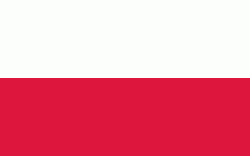Słupsk
Słupsk (Stôłpsk, ; formerly Stolp, ; also known by several alternative names) is a city with powiat rights located on the Słupia River in the Pomeranian Voivodeship in northern Poland, in the historical region of Pomerania or more specifically in its part known in contemporary Poland as Central Pomerania (Pomorze Środkowe) within the wider West Pomerania (Pomorze Zachodnie). According to Statistics Poland, it has a population of 88,835 inhabitants while occupying 43.15 km2, thus being one of the most densely populated cities in the country as of December 2021. In addition, the city is the administrative seat of Słupsk County and the rural Gmina Słupsk, despite belonging to neither, while until 1999 it was the capital of Słupsk Voivodeship.
Słupsk had its origins as a Pomeranian settlement in the early Middle Ages. In 1265 it was given town rights. By the 14th century, the town had become a centre of local administration and trade and a Hanseatic League associate. Between 1368 and 1478 it was a residence of the Dukes of Słupsk, until 1474 vassals of the Kingdom of Poland. In 1648, according to the peace treaty of Osnabrück, Stolp became part of Brandenburg-Prussia. In 1815 it was incorporated into the newly formed Prussian Province of Pomerania. After World War II, the city again became part of Poland, as it fell within the new borders determined by the Potsdam Conference.
Slavic names in Pomeranian — Stolpsk, Stôłpsk, Słëpsk, Słëpskò, Stôłp — and Polish — Słupsk — may be etymologically related to the words słup ("pole") and stołp ("keep"). There are two hypotheses about the origin of those names: that it refers to a specific way of constructing buildings on boggy ground with additional pile support, which is still in use, or that it is connected with a tower or other defensive structure on the banks of the Słupia River.
Later, during German occupation, the town was named Stolp, to which the suffix in Pommern was attached in order to avoid confusion with other places similarly named. The Germanised name comes from one of five Slavic Pomeranian names of this settlement. The city was occasionally called Stolpe, referring to the Słupia River, whose German name is Stolpe. Stolpe is also the Latin exonym for this place.
Słupsk had its origins as a Pomeranian settlement in the early Middle Ages. In 1265 it was given town rights. By the 14th century, the town had become a centre of local administration and trade and a Hanseatic League associate. Between 1368 and 1478 it was a residence of the Dukes of Słupsk, until 1474 vassals of the Kingdom of Poland. In 1648, according to the peace treaty of Osnabrück, Stolp became part of Brandenburg-Prussia. In 1815 it was incorporated into the newly formed Prussian Province of Pomerania. After World War II, the city again became part of Poland, as it fell within the new borders determined by the Potsdam Conference.
Slavic names in Pomeranian — Stolpsk, Stôłpsk, Słëpsk, Słëpskò, Stôłp — and Polish — Słupsk — may be etymologically related to the words słup ("pole") and stołp ("keep"). There are two hypotheses about the origin of those names: that it refers to a specific way of constructing buildings on boggy ground with additional pile support, which is still in use, or that it is connected with a tower or other defensive structure on the banks of the Słupia River.
Later, during German occupation, the town was named Stolp, to which the suffix in Pommern was attached in order to avoid confusion with other places similarly named. The Germanised name comes from one of five Slavic Pomeranian names of this settlement. The city was occasionally called Stolpe, referring to the Słupia River, whose German name is Stolpe. Stolpe is also the Latin exonym for this place.
Map - Słupsk
Map
Country - Poland
 |
 |
| Flag of Poland | |
Poland has a temperate transitional climate and its territory traverses the Central European Plain, extending from Baltic Sea in the north to Sudeten and Carpathian Mountains in the south. The longest Polish river is the Vistula, and Poland's highest point is Mount Rysy, situated in the Tatra mountain range of the Carpathians. The country is bordered by Lithuania and Russia to the northeast, Belarus and Ukraine to the east, Slovakia and the Czech Republic to the south, and Germany to the west. It also shares maritime boundaries with Denmark and Sweden.
Currency / Language
| ISO | Currency | Symbol | Significant figures |
|---|---|---|---|
| PLN | Polish złoty | zÅ‚ | 2 |
| ISO | Language |
|---|---|
| PL | Polish language |















